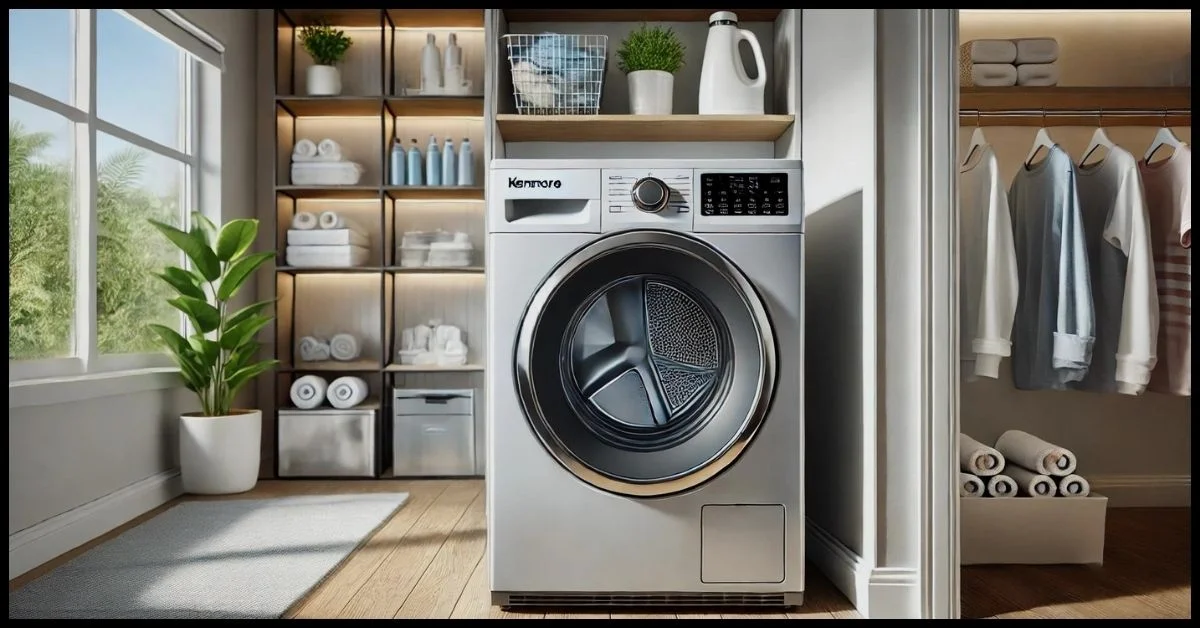Contents
- 1 Table of Contents
- 2 Introduction to the Kenmore Dryer Model 110.62812990
- 3 Key Features of the Kenmore Dryer Model 110.62812990
- 4 Operating the Kenmore Dryer
- 5 Maintenance Tips
- 6 Common Problems and Troubleshooting
- 7 Energy Efficiency Tips for Your Dryer
- 8 Replacement Parts and Where to Find Them
- 9 Conclusion
- 10 FAQ
Table of Contents
Kenmore Dryer Model 11062812990 The Kenmore Dryer Model 110.62812990 is a popular appliance in many households. Known for its durability and efficiency, it has been a staple in the world of home appliances for several years. Whether you’re new to this model or have been using it for a while, this article provides an in-depth look at its features, troubleshooting tips, maintenance requirements, and much more.
Table of Contents
- Introduction to the Kenmore Dryer Model 110.62812990
- Key Features of the Kenmore Dryer Model 110.62812990
- Operating the Kenmore Dryer
- Maintenance Tips
- Common Problems and Troubleshooting
- Energy Efficiency Tips for Your Dryer
- Replacement Parts and Where to Find Them
- Conclusion
- FAQ
Introduction to the Kenmore Dryer Model 110.62812990
Kenmore is a well-known brand in the home appliance industry, and their Model 110.62812990 dryer is no exception. Designed with ease of use and long-term durability in mind, this model is perfect for medium to large households that require a reliable machine to handle multiple loads of laundry each week.
Kenmore dryers are produced by Whirlpool Corporation, a trusted name in the appliance market. The 110.62812990 model is part of their standard electric dryer range and has been praised for its simple yet effective design. Understanding how this machine works and how to maintain it can extend its life and keep your laundry routine running smoothly.
Key Features of the Kenmore Dryer Model 110.62812990
This Kenmore dryer boasts several key features that make it a reliable choice for many homes. Understanding these features helps you make the most out of your appliance.
1. Multiple Drying Cycles
The 110.62812990 dryer offers various drying cycles tailored to different fabric types and drying needs. These cycles include:
- Timed Dry: Ideal for clothes that need to be dried for a specific time duration.
- Auto Moisture Sensing: Adjusts drying time based on the moisture levels in your laundry.
- Wrinkle Guard: Helps prevent wrinkles by periodically tumbling the clothes after the drying cycle ends.
- Delicate Cycle: Designed for delicate fabrics that require low heat and gentle drying.
2. Generous Capacity
With a capacity of around 6.5 cubic feet, this dryer can easily accommodate large loads of laundry, making it suitable for families or those with significant laundry needs.
3. Lint Filter Indicator
The model comes equipped with a lint filter, which is essential for the dryer’s efficiency and safety. The machine has a built-in indicator to remind users to clean the lint filter after each cycle.
4. Automatic Shut-Off
For added safety and energy efficiency, the dryer automatically shuts off once the cycle is complete, preventing overheating and saving energy.
5. Adjustable Temperature Settings
This dryer allows users to choose from different temperature settings based on the fabric type, ensuring that delicate clothes aren’t damaged by excessive heat.
Operating the Kenmore Dryer
Control Panel Overview
The control panel of the Kenmore 110.62812990 dryer is intuitive and easy to use. Here’s a breakdown of the key controls:
- Cycle Selector: Allows you to choose the desired drying cycle. The selector includes options like “Normal,” “Delicate,” and “Timed Dry.”
- Start Button: Press this to begin the drying cycle once you have selected the desired settings.
- Temperature Selector: Adjusts the drying temperature based on fabric type.
- Timer Control: If you’re using a timed drying cycle, this knob lets you set the duration of the drying process.
Drying Cycles
Each cycle is designed to handle specific types of fabric and drying needs:
- Normal: Best for regular fabrics like cotton.
- Heavy Duty: Ideal for bulky items such as towels and bed linens.
- Delicate: Provides gentle drying for delicate fabrics like silk or lace.
- Timed Dry: You can manually set the time for drying. Ideal for specific loads that need controlled drying time.
Maintenance Tips
Routine maintenance is crucial for ensuring that your Kenmore dryer continues to operate efficiently. By following these tips, you can reduce wear and tear, avoid costly repairs, and extend the life of the appliance.

Cleaning the Lint Trap
One of the most important maintenance tasks is cleaning the lint trap after every load. The lint trap helps to capture fabric fibers and debris that come off clothes during the drying process. If it’s not cleaned regularly, it can cause the dryer to overheat and become a fire hazard.
- Remove the lint screen from the dryer door.
- Wipe off any lint collected on the screen.
- Inspect the screen for any blockages or build-up of detergent residue.
- Rinse the lint trap with water every few months to remove any buildup.
Checking the Ventilation System
The dryer’s vent system plays a crucial role in expelling heat and moisture from the dryer drum. Over time, lint can accumulate in the vent, causing reduced airflow and potentially leading to overheating. To prevent this:
- Disconnect the dryer from the power source before inspecting the vent.
- Remove any visible lint or debris from the vent hose and exhaust vent.
- Use a vacuum or brush to clean deep within the vent hose if necessary.
- Ensure the vent hose is properly connected and free of kinks or twists.
Periodic Inspection and Cleaning
Regularly inspecting and cleaning the inside of your dryer drum, door seals, and control panel can help prevent problems and ensure your dryer runs smoothly:
- Check for debris around the door seals and drum.
- Wipe down the interior of the drum with a damp cloth to remove any residue or lint.
- Ensure the control panel is clean and all knobs and buttons are functioning properly.
Common Problems and Troubleshooting
Even with regular maintenance, you may encounter some common issues with the Kenmore dryer. Here’s how to troubleshoot and resolve them.
Dryer Won’t Start
If your dryer isn’t starting, the issue could be related to power, the door switch, or the control panel.
- Check the power cord and ensure it’s plugged in correctly.
- Examine the circuit breaker to see if the dryer’s electrical outlet is receiving power.
- Inspect the door switch, as the dryer won’t start if the door isn’t properly closed.
Clothes Not Drying Properly
If your clothes are taking too long to dry, the problem may be related to airflow or the heating element:
- Clean the lint filter to improve airflow.
- Check the vent system for blockages or kinks that might restrict airflow.
- Inspect the heating element for any signs of damage or failure.
Excessive Noise During Operation
If your dryer is making strange noises, there could be an issue with the drum belt or the support rollers:
- Check the drum belt for wear and tear. A broken belt may cause the drum to stop rotating.
- Inspect the support rollers for signs of wear, as damaged rollers can lead to excessive noise.
Energy Efficiency Tips for Your Dryer
Making your dryer more energy-efficient not only reduces your energy bills but also helps prolong its lifespan. Here are some tips to improve energy efficiency:
- Use lower heat settings whenever possible. Higher heat settings consume more energy and can wear out clothes faster.
- Dry full loads, but avoid overloading the dryer. Drying half-loads can waste energy, while overloading can reduce airflow and increase drying time.
- Clean the lint trap regularly to maintain proper airflow and avoid strain on the heating element.
- Consider air drying lightweight items such as delicate fabrics to save energy and reduce wear and tear on the machine.
Replacement Parts and Where to Find Them
If your dryer needs replacement parts, it’s important to know where to find them and which parts are most commonly replaced. Here are some of the most frequent replacements:
- Lint Trap: A new lint trap may be necessary if the original one is damaged or cracked.
- Drum Belt: Over time, the drum belt can become worn and may need replacement.
- Heating Element: If the dryer isn’t heating up properly, the heating element may need to be replaced.
- Thermal Fuse: A blown thermal fuse can prevent the dryer from operating and will need to be replaced.
You can find genuine replacement parts for the Kenmore 110.62812990 dryer on the Sears PartsDirect website or at major appliance retailers.
Conclusion
Kenmore Dryer Model 11062812990 The Kenmore Dryer Model 110.62812990 is a reliable and efficient appliance that, with proper maintenance, can serve your household for years. Understanding how to operate, maintain, and troubleshoot this dryer will help you get the most out of your investment. From its versatile drying cycles to its energy-efficient design, this dryer is built to handle all your laundry needs.
FAQ
1. How often should I clean the lint trap?
You should clean the lint trap after every load to ensure efficient drying and prevent potential fire hazards.
2. What should I do if my dryer isn’t heating properly?
If your dryer isn’t heating properly, check the lint trap, ventilation system, and heating element. If these components are in good condition, the issue may be with the thermal fuse.
3. How can I improve the energy efficiency of my Kenmore dryer?
To improve energy efficiency, dry full loads, use lower heat settings, clean the lint trap regularly, and avoid overloading the dryer.
4. Where can I buy replacement parts for my Kenmore dryer?
You can purchase replacement parts from Sears PartsDirect or other major appliance retailers. Make sure to buy genuine Kenmore or compatible parts.
5. What could cause excessive noise during drying?
Excessive noise may be due to a worn drum belt or damaged support rollers. Inspect these components and replace them if necessary.




